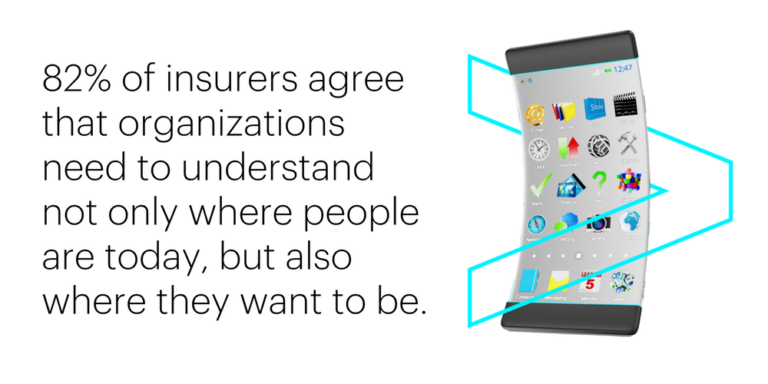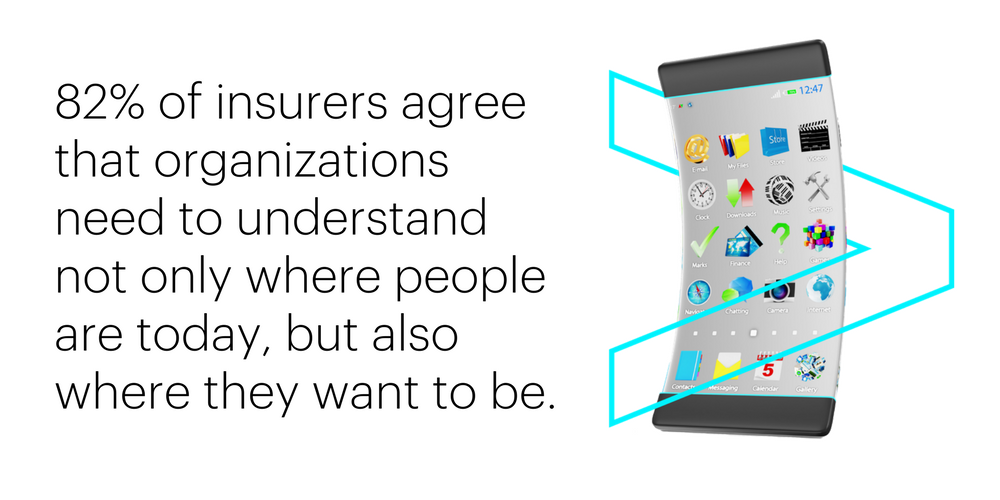
Other parts of this series:
Technology is adapting to how humans behave. In the process, it is learning how to enhance our lives.
In my previous posts about our Technology Vision for Insurance 2017 survey, I discussed how emerging technologies are changing life insurance. This time, I will consider how insurers can turn traditional customer relationships into true partnerships by designing technology for humans.
Moving beyond personalization
Using artificial intelligence (AI) tools and Internet of Things (IoT) interfaces in the connected home, car and workplace, insurers have an opportunity to gather, analyze and act on consumer data in real-time, which in turn allows them to begin to account for individual human behavior.
Insurers can now gain insights into how people think, what they want, and how they react. Based on these insights:
- Risk can be priced directly, individually and in real-time.
- Insurers can provide customers with real-time services and risk management solutions, tailored to their individual behaviors and goals.
- Insurers can understand which incentives motivate positive behavior changes to reduce claims and strengthen long-term customer relationships.
Based on our survey, insurers are aware of these opportunities:

Reducing Risk
More than for many other industries, designing for humans represents a significant step forward for life insurers. It gives carriers an opportunity to make their brands a bigger part of customers’ everyday lives, rather than only interacting with them during sales, renewal and claims processes:
- North America’s John Hancock Insurance, AIA in Hong Kong and Generali in Europe all leverage the Vitality incentive-based wellness platform from South Africa’s Discovery to reward life customers for healthy living.
- Finnish mutual life insurance company LocalTapiola launched a Smart Life product that combines financial cover with fitness tracking and health coaching to help people lead healthier lives.
Life companies and their ecosystem partners could even leverage Internet of Things devices and apps to remotely monitor elderly customers’ health indicators, thus allowing them safely to live independently for longer before they need to move into a frail-care home.
Europ Assistance’s Connect et Moi fragile care product, for example, uses a smart box in the home that learns a person’s daily rhythm of life via motion detectors and other sensors. It can send automatic alerts or help when there is a deviation from the usual routine.
Applications like these, however, are just a start. To take it to a higher level, insurers will need to partner with customers to reduce risks and improve outcomes—from healthy living to leaving a family legacy. Their new purpose is to help define a path that people can follow to reach their goals.
Q: Where does a personalized customer experience rank among your organization’s digital investment priorities? (Please click on your choice)
Trend 4 predictions
- Within five years, a set of Global 2000 companies will begin hiring employees based not only on self-reported experience, but also on behaviors exhibited during previous roles and how individuals handled themselves in certain situations.
- In five years or less, governments will collaborate with businesses to drive sustainability shifts in societal behavior. Energy efficiency, CO2 reductions, and landfill diversion will be the first targets.
- By 2022, multinational organizations will introduce employee-facing technologies that can identify when a worker is frustrated and then alter the tone and style of feedback or guidance automatically delivered to the worker.
- Within five years, a Global 2000 company will lose significant market share due to a behavior-manipulation scandal.
In my next post, I will take a look at how this digital era requires insurers and other organizations to establish new rules and standards.
Until then, take a look at our Technology Vision for Insurance 2017 page.